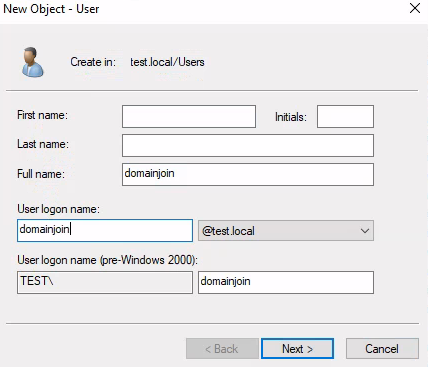Domain-join accounts represent one of the most critical yet frequently overlooked security vulnerabilities in Active Directory environments.
Despite following Microsoft’s official guidance, these specialized accounts inherit over-privileged Access Control Entries (ACLs) that create multiple attack pathways for compromise, as demonstrated through recent security research highlighting practical exploitation techniques.
Domain-join accounts exist by necessity in enterprise deployments where organizations must automate computer provisioning at scale.
These accounts are configured with permissions to create and modify computer objects during operating system deployments through Configuration Manager or similar tools.
However, the combination of credential exposure during the build process and inherited permissions creates an ideal compromise vector that security professionals encounter repeatedly during assessments.
The exposure occurs at deployment time when domain join credentials are embedded in unattended installation files, PXE boot sequences, and deployment scripts, making them accessible to any attacker with internal network access.
When organizations follow Microsoft’s recommended approach for delegating permissions, they inadvertently create security issues stemming from Active Directory’s default security descriptor inheritance model.

The domain-join account automatically becomes the owner of computer objects it creates, gaining direct read permissions on all properties, including the Legacy-LAPS password stored in the ms-Mcs-AdmPwd attribute.
Additionally, the account inherits write permissions on the msDS-AllowedToActOnBehalfOfOtherIdentity attribute, enabling Resource-Based Constrained Delegation attacks that compromise target machines.

The most sophisticated exploitation path leverages reset-password capabilities in conjunction with Active Directory replication delays.
By resetting a computer account’s password on the Primary Domain Controller while an out-of-sync secondary domain controller retains the original credentials, attackers can request a certificate using the old password via PKINIT.
This allows recovery of the original machine account password without triggering detection mechanisms, enabling lasting access through silver ticket forgery after restoring the trust relationship.
This technique requires minimal prerequisites: a domain join account with reset-password rights, multiple Active Directory sites with standard replication delays, and an Active Directory Certificate Server—all common components of enterprise deployments.
Effective mitigation requires layered controls beyond Microsoft’s standard recommendations.
Organizations should disable arbitrary user computer account creation by setting ms-DS-MachineAccountQuota to zero, ensuring only Domain Admins or delegated administrators can create computer objects.
Domain Admins should own all computer objects rather than allowing creator-owner permissions, requiring recurring remediation scripts to restore correct ownership.
Deny ACEs must be applied directly to every computer object to prevent legacy-LAPS reads and RBCD exploitation, while create/delete rights should be scoped strictly to specific organizational units.
However, even comprehensive ACL hardening cannot fully mitigate reset-password abuse without eliminating the ability to rejoin machines, presenting a difficult security trade-off in operational environments.
This reality underscores why domain-join account security must encompass multiple layers: aggressive credential protection during deployment, segregated network access for provisioning infrastructure, and continuous monitoring for suspicious account activity patterns.
Organizations that treat domain-join accounts as highly sensitive infrastructure credentials rather than routine service accounts significantly reduce their Active Directory compromise risk.
Cyber Awareness Month Offer: Upskill With 100+ Premium Cybersecurity Courses From EHA's Diamond Membership: Join Today